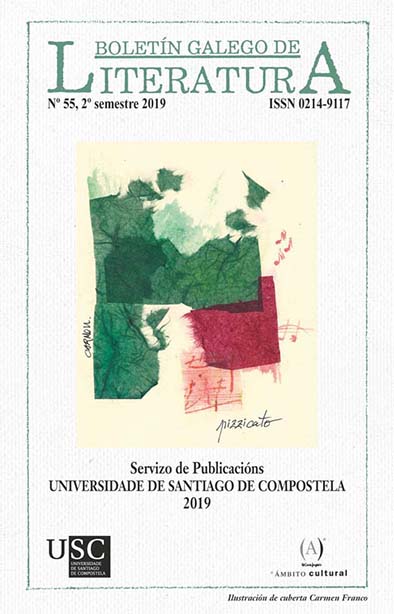Sexual experience with the monster in modern fairy tale The Shape of Water carried out by Guillermo del Toro
Main Article Content
Abstract
The myth of love between the monstrosity and the human being has been a constant feature in literary creations of all times from antique times. This note proposes a brief comparative analysis of sexual experience of lovers in the film The Shape of Water (2017), by Guillermo del Toro (México, 1964), with regard to previous narratives, but also by deepening in other aspects such as the faces of the monster in the movie and its proximity with fairy tales formula.
Keywords:
Article Details
References
Antonio Mora, Maynor. 2007. Los monstruos y la alteridad: hacia una interpretación crítica del mito moderno del monstruo. Costa Rica: Universidad Nacional de Costa Rica.
Apolodoro. 2016. Biblioteca Mitológica. Madrid: Alianza Editorial.
Apuleyo. 2013. El Asno de Oro. Madrid: Alianza Editorial.
Conde, Ana C. 2004. “Estudio sobre una deriva conceptual: del Monstruo al otro a través de la literatura”, en A Parte Rei: revista de filosofía, 34, pp. 1- 17. http://serbal.pntic.mec.es/%7ecmunoz11/conde34.pdf [Consulta 01/08/2019].
Daniel, Noel (ed). 2013. Los cuentos de Hans Christian Andersen. Alemania: Taschen.
De Beaumont, Madame Leprince. 2013. La Bella y la Bestia. Madrid: Reino de Cordelia.
Margarida Ramos, Ana. 2005. Os monstros na literatura de cordel portuguesa do século XVIII (Tese de Doutoramento). Portugal: Universidade de Aveiro.
Tatar, Maria. 2002. Los cuentos de hadas clásicos anotados. Barcelona: Editorial Crítica.
The shape of Water. 2017. Dirección: Guillermo del Toro. Producción: Fox Searchlight Pictures e TSG Entertainment. 119 min.
Most read articles by the same author(s)
- Rocío G-Pedreira, Theatre, Childhood and School: reflections about the dramatic genre in Children's Literature , Elos: Revista de Literatura Infantil e Xuvenil: No 4 (2017)
- Rocío G-Pedreira, Olalla Cortizas Varela, Stopmotion' film adaptations of Roald Dahl's 'James and the Giant Peach' and 'Fantastic Mr. Fox' , Elos: Revista de Literatura Infantil e Xuvenil: No 5 (2018)
- Rocío G-Pedreira, Children’s Fantasy Literature. An Introduction , Elos: Revista de Literatura Infantil e Xuvenil: No 5 (2018)
- Rocío G-Pedreira, Guerras mundiais na Literatura Infantil e Xuvenil galega. Roles femininos. , Boletín Galego de Literatura: No 52 (2018): 1º semestre
- Rocío G-Pedreira, Proposal of an emotional intelligence model applied to the reading experience in scholar contexts , Innovación educativa: No 28 (2018): In the centenary of the Institute-School creation: past, present and future of the integrated public schools of compulsory primary and secondary education
- Rocío G-Pedreira, The complexity of Cada corazón, un umbral’s fantasy model , Boletín Galego de Literatura: No 54 (2019): 1º semestre
- Rocío G-Pedreira, ...de ninfas, hadas, gnomos y otros seres fantásticos. Un viaje por los personajes que alimentan la fantasía en todos los tiempos , Boletín Galego de Literatura: No 55 (2019): 2º semestre
- Rocío G-Pedreira, A incidencia de reescrituras fílmicas na relación de nomeados e premiados dos principais galardóns internacionais a longametraxes animadas , Boletín Galego de Literatura: No 56 (2020): 1st semester
- Rocío G-Pedreira, Comparative analysis between literature and comic: Los que quedan (2019) by Josep Busquet and Alex Xöul , Boletín Galego de Literatura: No 57 (2020): 2nd semester
- Rocío G-Pedreira, The materiality of the book on the creation of figured spaces in El gran hotel Wes Anderson, by Nuria Díaz , Boletín Galego de Literatura: No 58 (2021): 1º semestre







